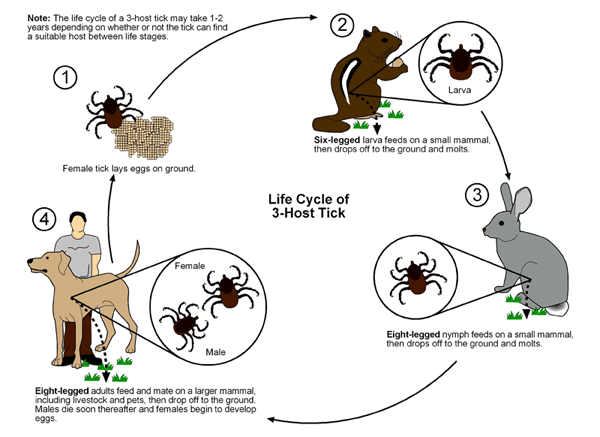The Wood Tick

The Dog Tick, Dermacentor variabilis, in its splendor of beet overtones and resistance to vilification. By Sam Droege, Flickr [CC BY 2.0]
If you notice a tick on you or believe you have a tick infestation on your property, make sure you act quickly to prevent a dangerous situation.
HOW TO IDENTIFY WOOD TICKS
These ticks (technically arachnids and related to spiders) have four pairs of legs that let them crawl among the brush as well as on your skin. These species grow up to five millimeters in length, with females being close to twice the size of male species.
Both genders have gray patterns on their bodies, but females patterns can grow up to a centimeter and a half after they have fed upon a host.
Appearance and Behavior

The lifecycle of a 3-host hard tick, based on Dermacentor variabilis (American dog tick). Illustration by: Scott Charlesworth, Purdue University, Medical Entomology Extension. Own work [CC BY-SA 4.0]
American dog ticks prefer to bite dogs, and are often transferred to humans in the home in this nature.
However, if the ticks do not bite onto a host first, it is unlikely that they will move into a residence, as they prefer being outside.
If a tick bites you, the skin around the bite will likely become red, swollen, and inflamed. It will also probably itch. Try not to touch it, and if the area becomes more infected, or if you begin to experience other symptoms, visit a doctor as soon as possible.

